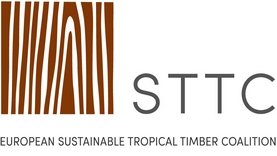For an organisation dedicated to growing the EU market for sustainably sourced tropical timber, the Sustainable Tropical Timber Coalition’s (STTC) conference this year got to the heart of the issue.
The title of the event in Aarhus, Denmark, Sustainably sourced tropical timber: Selling a positive story, was the core theme being promotion and marketing.
To tackle the topic, speakers came not only from across the EU timber sector, but also from NGOs and marketing agencies, with a keynote delivered by brands expert and marketeer Nigel Hollis, Executive Vice President of international consultancy Kantar Millward Brown.
A view shared by speakers and the international audience of over 100, was that, besides its environmental story, key to marketing sustainable tropical timber was to present exemplars of its use. These could demonstrate its durability, aesthetics, technical performance and overall sustainability in use, with construction and design professionals among principal targets. Mr Hollis effectively summed this up with his comment ‘great [marketing] content is more than a great advertisement’.
The conference itself did this by including a tour of sustainable tropical timber applications and installations across the host city. These ranged from decking and seating in newly pedestrianised zones, to interior uses in Aarhus’s Aros modern art gallery and the striking Kulbroen (Coalbridge). The latter is a derelict concrete coal conveyor in the reviving harbour area, set to be restored as a public walkway using sustainably sourced tropical timber decking in an STTC-backed FSC Denmark project. Conference delegates climbed to the demonstration platform where various species are being tested on outdoor perfomance.
Aarhus City Architect Stephen Willacy underlined the potential of such projects by highlighting the latent appetite of the modern construction sector to build sustainably with wood. He described the significant role timber-based housing was set to play in Aarhus as it grew from a city of 325,000 people to 450,000 by 2050.
Nienke Stam, of STTC founder and core funder, IDH-the Sustainable Trade Initiative, emphasised the need for growing the customer base for timber from certified sustainably managed forest.
In the period 2008-2016, IDH contributed to certification of 7,4 million hectares of forest a (equal to 50% of all FSC certification in the tropics, by March 1, 2016).
“But” she said. “there was a growing realisation this work in the producing countries was not enough. It needed to be backed with efforts to increase sustainable tropical timber market demand, hence the launch of the STTC.” She emphasised her point with satellite images of intact certified sustainably managed timber producing forest in Guatemala, where people were incentivised to maintain tree cover. Alongside woodland in a ‘preserved’ national park area was seriously degraded.
Among the sales and marketing-related projects which the STTC has supported, Iván Bermejo Barbier of Copade presented the joint marketing project the sustainable development NGO had undertaken with the Spanish arm of home improvement retail giant Leroy Merlin. This included creating a database of the company’s tropical timber suppliers and supporting those still uncertified towards achieving sustainability certification. Leroy Merlin staff were trained in certification issues and new in-store point of sale material and a website advert on sustainable tropical timber were developed. The project partners also held meetings with public procurement officers in Madrid and elsewhere to deliver sustainable tropical timber messaging.
Equally inventive was the FSC Denmark-led STTC supported project presented by Loa Dalgaard Worm. Besides the Kulbroen project, which has been backed by STTC private sector supporters and featured as part of Denmark’s 2017 Building Green sustainable construction trade fair, this has included a market outreach programme and a previous innovative promotional tool in the form of a set of three timber sample animal ‘sculptures’, each comprising 37 slices of different lesser known tropical species. These have been presented to architects and other decision makers who host presentations by FSC Denmark on sustainable tropical timber. Out of 600 made, there are just 10 sets left.
Alberto Romero of Spanish timber trade federation AEIM described its ambitious marketing led plan for the next three years. The goal is to increase Spain’s percentage of verified legally sourced tropical imports from 86% to 95% of the total, and sustainably sourced from 4% to 12%.
A fourth STTC-supported action plan project that was featured was from the International Tropical Timber Technical Organisation (ATIBT). Described as a landing point for the sector, www.mytropicaltimber.org is a new website set to deliver broad messaging on sustainable tropical timber to a wide market audience and give descriptions and applications of a broad range of species, plus supplier listings.
“Users will be able to find their wood from over 100 varieties, and search by species, end-use specification, and provider,” said ATIBT Director General Benoit Jobbé-Duval, adding that the initial providers listing would cover most likely five out of these countries: Italy, Spain, Belgium, Germany, UK and the Netherlands.
Delegates were given a still broader perspective on sustainable tropical timber issues in table talk sessions where they were invited to join three half hour presentations from a choice of 12. Themes ranged from using sustainable development goals in timber sales, to positioning FLEGT when selling timber, marketing lesser known species and the importance of market intelligence in boosting sustainably sourced timber demand. The Value and Impact Analysis Initiative (VIA), which is led by the ISEAL Alliance (IA), in partnership with Kingfisher, IKEA and Tetra Pak, also shared independent research-backed marketing messages that businesses can now use in their efforts to communicate the sustainability benefits of certified tropical timber.
In his keynote, Mr Hollis underlined the importance in marketing any product of building a strong and coherent identity.
“The vast bulk of buying decisions are influenced by brands,” he said. “They are ultimately determined by emotions and ideas already in your head, but what a strong brand does is short cut the decision making process through building trust and confidence.”
It was also important the industry has confidence and pride in its identity and was not afraid to be unique, pioneering and to challenge market perceptions.
“It’s been shown that meaningfully different brands grow fastest,” said Mr Hollis.
Following his presentation, he used exercises to guide delegates, divided into groups, through the process of developing a potential marketing approach and identity for sustainable tropical timber. Besides sustainability, climate change and saving the forest, promotional themes also emerged from the ‘teams’ around ‘pride’, ‘protection’ and ‘beauty’.
Mr Hollis later blogged on the Kantar Millward Brown website that the conference had emphasised to him wood’s unique capability among construction materials to regenerate. It also demonstrated that ‘if people have a vested interest in the forest they are more likely to protect it’. You can read the blog here.
The Conference closed with a call from IDH for ideas for the future development of the STTC since its funding programme in its current form finishes at the end of 2018. A poll of delegates showed nearly all favouring STTC’s continuation and put communication at the top of its priorities.










